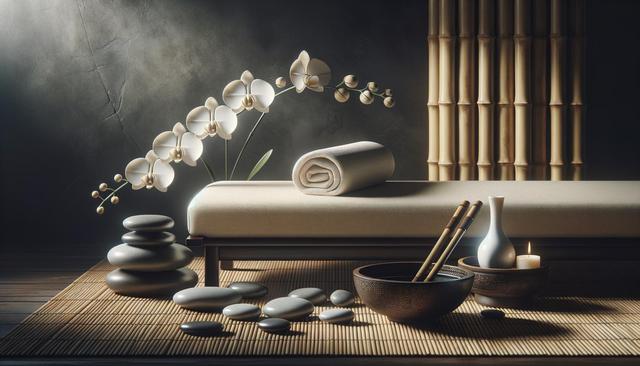Roots in Tradition: The Origins of Asian Massage
Asian massage is more than just a therapeutic practice—it’s a reflection of ancient philosophies centered on balance, energy, and the connection between body and mind. Rooted in centuries-old traditions from countries like China, Japan, Thailand, and India, these techniques were heavily influenced by traditional medicine systems such as Ayurveda and Traditional Chinese Medicine (TCM). Each region developed unique methods and concepts, but they all share a fundamental belief: the human body must maintain a harmonious flow of energy to achieve health and wellness. For example:
- Chinese massage techniques like Tui Na focus on energy meridians to restore Qi (vital energy) balance.
- Thai massage incorporates assisted yoga-like stretches and pressure points to enhance flexibility and stimulate circulation.
- Japanese Shiatsu uses finger pressure to promote energy flow and relieve tension throughout the body.
These ancient systems were not only used for relaxation but were also integral to preventive health care, supporting both physical and emotional well-being.
The Art of Balance: Physical and Mental Benefits
One of the most appealing aspects of Asian massage is its dual focus on the body and mind. While Western massage often emphasizes muscle relief, Asian techniques aim to restore equilibrium across the physical and energetic systems. Many people turn to these therapies for their potential to alleviate common conditions such as:
- Stress and anxiety
- Chronic pain, particularly in the back and neck
- Digestive issues
- Insomnia or sleep difficulties
In addition to these physical benefits, Asian massage promotes a sense of mindfulness and relaxation. By engaging in slow, intentional breathing and body awareness during the session, recipients often experience a meditative state. This mind-body integration is especially valuable in today’s high-stress lifestyle, as it provides a structured way to decompress and reconnect with oneself.
Modern Applications and Integration
Despite its ancient roots, Asian massage has found a natural place in contemporary wellness routines. Today, many spas, wellness centers, and even clinical environments offer services that integrate traditional Asian techniques with modern therapeutic practices. This fusion allows individuals to benefit from both the time-tested wisdom of the East and the scientific approach of the West. For example, some massage therapists blend Tui Na with Swedish massage or combine Thai massage with physical therapy exercises to create a comprehensive wellness plan.
Additionally, growing interest in holistic health has led to increased awareness and demand for these traditional practices. Educational institutions and certification programs are now offering specialized training in Asian massage, ensuring that practitioners deliver authentic, informed care. This expansion has made these techniques more accessible and adaptable, allowing people from all walks of life to incorporate them into their self-care routines.
Cultural Significance and Respect for Tradition
Understanding the cultural origins of Asian massage also deepens the appreciation for its techniques and philosophy. These therapies are not simply physical treatments—they are deeply tied to the cultural and spiritual values of the societies in which they were developed. Respect for the practitioner-client relationship, the ritual of the massage space, and the intention behind each movement are all important elements of an authentic experience.
Practitioners often undergo years of training, not just in technique but in the cultural context and theoretical foundations of the practice. Clients who approach these therapies with an open mind and a willingness to engage in the full experience often find deeper, longer-lasting benefits. The cultural richness of Asian massage is a reminder that healing can be both a personal and communal journey, rooted in understanding and respect.
Choosing the Right Massage for Your Needs
With so many different types of Asian massage available, it can be helpful to understand the characteristics of each to find one that aligns with your wellness goals. Each technique offers unique benefits depending on what you are seeking:
- Tui Na: Ideal for musculoskeletal issues and energy balancing.
- Thai Massage: Great for improving flexibility and relieving joint tension.
- Shiatsu: Focuses on energy pathways and is beneficial for stress and circulation.
- Ayurvedic Massage: Often uses warm oils and is suitable for detoxification and relaxation.
Before booking a session, consider discussing your needs and expectations with the therapist. A knowledgeable practitioner can guide you toward a technique that complements your health condition, lifestyle, and personal preferences. Whether you’re dealing with physical discomfort or simply looking for a peaceful escape, there’s likely an approach within the realm of Asian massage that can support your journey toward well-being.
Conclusion: Embracing Ancient Wisdom for Modern Wellness
Asian massage continues to resonate with modern audiences because it offers more than temporary relaxation—it provides a pathway to holistic well-being. Rooted in centuries of wisdom, these techniques offer a multifaceted approach to health that emphasizes balance, mindfulness, and intentional care. For those seeking a deeper connection between body and mind, or simply a natural way to unwind, exploring the world of Asian massage can be a rewarding and enriching experience. By embracing these time-honored practices, individuals can tap into a legacy of healing that nurtures both the body and the spirit.







